Power Rangers 2017: A History of Saban’s Reclamation of the Franchise and What’s Next
Warning: This editorial contains mild spoilers for Go-Busters, Kyoryuger, and ToQger.
The holiday season is upon us which means that the current season of Power Rangers is winding down. So on the eve of Dino Charge becoming the third iteration of the franchise to receive the redundant descriptor of “super” for its sophomore season, I thought it would be a good idea to look towards the future of the brand and its impending theme. The post-Saban reclamation model of Power Rangers has decided to elongate one Super Sentai series into two American counterparts and leave us wondering what is next.
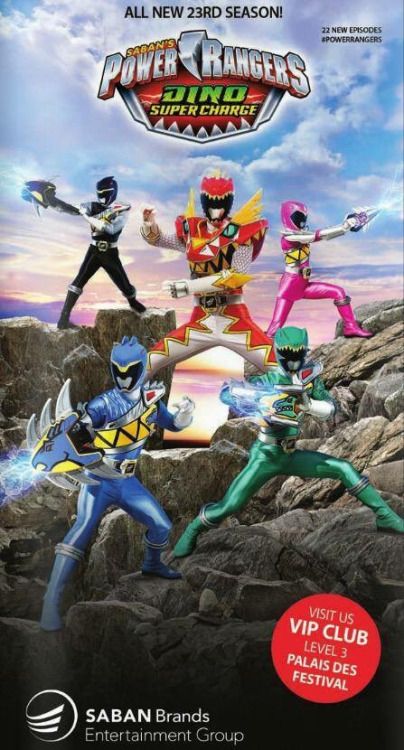
How did we reached this point? The year was 2010. Walter White was showing the world just how sinisterly cool a pizza-throwing, meth-cooking high school science teacher could be. A volcano called Eyjafjallajökull with a name less comprehensible than Mystic Mother’s backstory was grounding international flights. And Haim Saban had decided to rescue his long lost Power Rangers franchise from a fate worse than death: reversioning. Not only was the show coming back but it had found a new home on Nickelodeon. In a world without Fox Kids or Kids WB, Nick was the prime location for any children’s franchise looking to reinvent itself.
However, fans were given reason not to believe that all was well. Over the years, subsequent seasons saw their episode counts slowly whittled down from the typical 40 to the underwhelming 32. The new season – Samurai – would eventually clock in at only 20 episodes with Halloween and Christmas specials tacked on. While this was the norm for most children’s shows on Nick, fans of Super Sentai wondered how Saban was planning to compact 49 episodes of Samurai Sentai Shinkenger into less than half that number of Power Rangers Samurai episodes without losing the bulk of the story.
It turned out that Saban had another plan entirely. Our sword-wielding heroes would stick around for two years with the latter season having the aforementioned “Super” added to its title in order to differentiate them. The traditional cast, story, and multi-colored merchandise reset would now be a biennial event which begged the questions: would the adaptation process start to fall years behind and if so, just how far? The reversioning purgatory had already placed Power Rangers a full two years behind Super Sentai. That number seemed destined to grow.

Subsequent seasons Megaforce/Super Megaforce proved to be stopgaps as they fulfilled earlier fandom fears. Tensou Sentai Goseiger and Kaizoku Sentai Gokaiger were both adapted to little fanfare and even less coherent storytelling. Since Samurai, Executive Producer Jonathan Tzachor helmed the franchise with a new directive of directly translating the Japanese progenitor for an American audience as opposed to creating something new with the Super Sentai series acting merely as a foundation. The two Megaforce seasons reinforced fans’ belief that presenting only half of a Japanese season’s episodes would create hollow husks in place of where fully realized shows once stood.
While Goseiger was a prototypical series, Gokaiger represented both the 35th anniversary of the Super Sentai series and subsequently the 20th anniversary of Power Rangers. As such, it was a series full of cameos and homages to previous seasons. Why did Saban choose to take a weed wacker to both series as opposed to riding one horse for two years in the same vein as Samurai? It’s hard to say but there are popular running theories. Perhaps they wanted to laser focus the celebration within only a single year. Maybe the budgetary demands of attempting to pay respects to all of the rangers that came before were simply too high. It’s surmised that given all of the Super Sentai series that happened prior to the inception of Power Rangers received little to no airtime (“Blitz new powers?” Really?) in Super Megaforce, production found it best to have fewer reasons to utilize the footage. The rushed and unsatisfactory nature of the legendary battle that takes place in the Super Megaforce finale leads credence to the notion that celebrating the anniversary of Power Rangers was a far better idea on paper than in practice.
The current iteration of the show, Dino Charge, has returned us to the double season format with Dino Super Charge waiting in the wings. This adaptation of the 2013 series Zyuden Sentai Kyoryuger under the new direction of Judd Lynn also signifies the first time since the induction of the Power Rangers franchise that an entire Super Sentai series has gone begging. The 2012 series, Tokumei Sentai Go-Busters, was bypassed in favor of an arguably much more marketable and familiar dinosaur theme. Does this mean that Go-Busters is forever lost to the ether that already contains the gorgeous Gosei Sentai Dairanger costumes or was it merely placed on the backburner? Go-Busters is one of three options for the 2017 incarnation of the Power Rangers franchise. Let’s weigh the pros and cons of their potential.
Tokumei Sentai Go-Busters
Like Ninpu Sentai Hurricaneger (Ninja Storm) and Jyuken Sentai Gekiranger (Jungle Fury) before it, Go-Busters provided a striking visual contrast to both the anniversary seasons and the Super Sentai franchise as a whole. Gone were the spandex suits that would make Dr. K go absolutely apoplectic in favor of a thicker, almost leather feel. Uniformity and sleekness gave way to individuality and the belief that just maybe this is what a team of high tech soldiers might look like in the not too distant future.
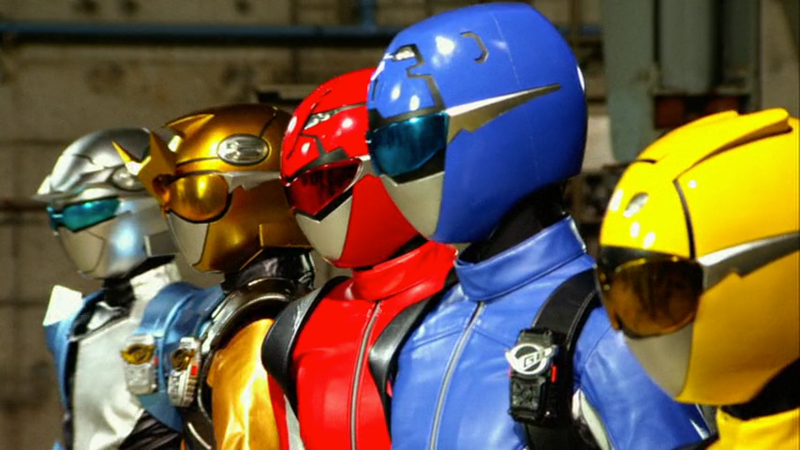
In addition, Go-Busters did something that no other season had done in recent memory: it made mecha battles both uniquely interesting and relevant to the overall story. Buddyroids – sentient, human-sized robots with animal motifs – were used as motorcycles, mecha cockpits, power up armor, and one even became an actual ranger. Despite being a support system, these characters were just as integral to the overall story as their human counterparts. Mecha fights happened concurrently with hand-to-hand battles and they influenced one another leading to a homeostasis not seen before or since in Super Sentai. They were a must watch affair and not simply the three minutes that happen after a monster explodes but before the team learns the lesson of the week.
Go-Busters was truly a feast for the eyes with footage so off the beaten path that, in the hands of a creative overseer, could make for truly compelling children’s television. That could prove to be both a boon or a burden. The season’s plot is somewhat tragic. The few main villains that do exist are humanoid. A common belief among older fans is that Go-Busters provides prime source material for a direct sequel season to RPM. Now while that is probably wishful thinking for so many reasons, it is a concept born out of an obtuse observation: Go-Busters would likely require RPM-level ingenuity to forge original villains and a coherent story.
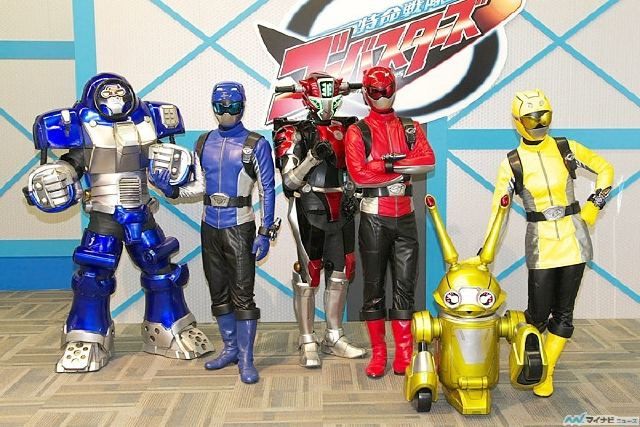
From a financial standpoint, the biggest red flag of the series is that it lacks collectibles like dino chargers or ranger keys meaning that Bandai might baulk at the idea of marketing a more bare bones toy line that doesn’t include a ready made selling point.
Go-Busters is the adult fan’s dream Power Rangers series and sadly a nightmare to the powers-that-be. It fails in a way that most older fans would never see as a failure. It’s too different. We can hope for an adaptation but in my estimation, the writing’s on the wall that it was initially skipped over for a reason. Whatever that may be, the decision makers have likely already made their final decision and the chances of it being time for buster are slim to none.
Ressha Sentai ToQger
For all of the fresh ideas and innovations that were brought to the table with Go-Busters, ToQger was the less dynamic other side of the coin. It was a pretty standard, by the books series in every sense of the terminology. Five train-themed archetypal rangers (hothead leader, nerd with glasses, “too cool for the room” guy, tough chick, and girly girl) battle a slew of villains who are almost exclusively monster suits and whose internal struggles are far more interesting than anything than any moment of growth experienced by the heroes. The series takes the analogy of light versus dark as literally as possible as the team strikes a fanned out pose as the Rainbow Line battles the evil, black Shadow Line. Subtlety was not ToQger’s strong suit.
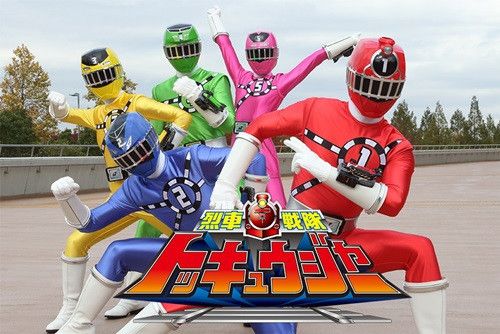
The suits are ugly. There’s no need to sugarcoat it. ToQger has some of the most barebones designs in recent memory. From the big numbers on the chests to the black and white rails plastered across the torsos to the gaudy track visors, the ToQger uniforms left a lot to be desired. The only signal sent here is to avoid purchasing plastic representations of these characters.
That being said, ToQger is abound with old school Super Sentai tropes that could make the adaptation process quite smooth. Battle lines are clearly drawn and the characters react predictably with little nuance. The team is far too concerned with keeping the entire world’s imagination chugging along to ever worry about silly little things like developing as individuals. For all intents and purposes, they are blank slates just waiting to be rewritten. Backhanded as these statements may be, there was a similar response when Enjin Sentai Go-Onger was airing and in the hands of Eddie Guzelian, the well-regarded RPM was born.
ToQger’s fight footage blossoms with possibilities. It features the fun ability of the team to change lines, so to speak. Each ranger is referred to by their number as opposed to color because, by switching the tiny train collectible that they each insert into their ToQ Changers, any of the rangers can transfer to the other four colors. While for much of the series there seemed to be no real storyline benefit to this gimmick, it created the type of consistently playful battles that were only previously seen in Gekisou Sentai Carranger (Turbo).
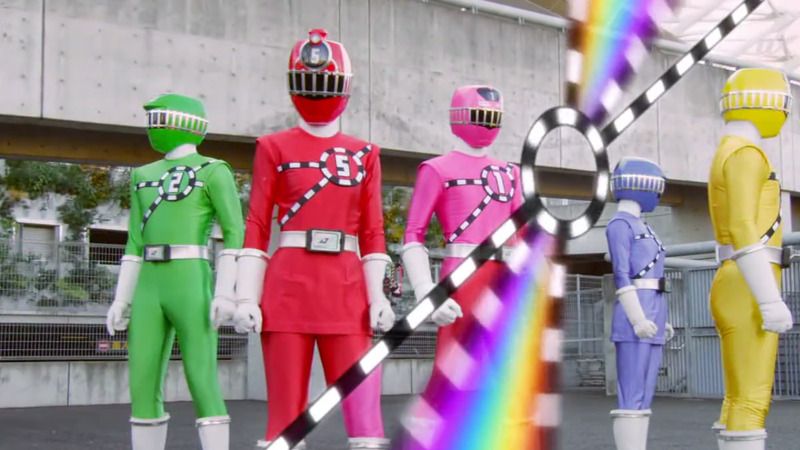
Bottom line? ToQger’s chances of being adapted are not very good. Both Bandai representatives and Judd Lynn have stated that while trains are a pervasive theme in Japanese children’s toys, the same doesn’t hold true in America. If theme and toy potential are the ultimate driving force behind which seasons are merchandising juggernauts and which ones will ultimately be deemed skippable, the concept of trains will lead Saban to not choo-choo-choose ToQger.
Shuriken Sentai Ninninger
Much like the current usage of dinosaurs on Power Rangers, Ninninger is presently Super Sentai’s third thematic dive into the ninjas well. The team attaches various throwing stars to their swords for all of their various transforming, mecha-summoning, and toy-selling needs. Sporting a random cavalcade of mecha like UFOs, dragons, and surfboards, Ninninger provides an explosive pop culture variety of tastes that makes their “ninjas who don’t hide” motto profoundly apt.
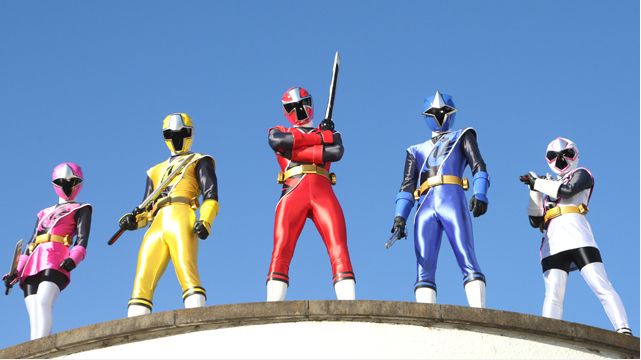
While hardly groundbreaking, Ninninger’s strength lies in its ability to find cohesion within chaos. Amalgamated concepts are embraced. In a season about ninjas, the sixth ranger is an American cowboy who battles evil with a guitar and changer shaped like a hamburger. Seriously. That isn’t a joke. While it doesn’t speak much for how the series stereotypes Western culture, it does demonstrate a bizarreness that doesn’t invite locked in storytelling.
However, does that also present Ninninger as perhaps too off the wall? Would a hamburger morpher be done away in favor of something more generic in the same was that the Shinkenger’s Sushi Changer (a cell phone shaped like the eponymous food) gave way to a basic, silver cell phone? Fans cried foul that Shinkenger was “too Japanese” and while the resulting product wasn’t well-received, the creators rarely leaned away from the samurai culture. One can debate whether that was because they thought they could work with the concepts or more so because they simply didn’t want to go through the effort of molding their own universe. In either scenario, it sets a precedent that cultural specific fighting styles do not make a season “too Japanese.”

The sword-fighting is both plentiful and playful. The rangers use their weapons to fire elemental projectiles as often as they cut down foes. The mecha is approached from a uniquely meta perspective with humanoid ones sitting in the chests of the larger robots in order to pilot one another. This rare charm makes Ninninger pop off the screen and force viewers to take notice.
The plot hits on old classics with increasingly powerful suit-only villains taking on the team in preparation for a late-arriving big bad. One of the villains is a corrupted former hero. The sixth ranger almost gives in to evil himself. All of these concepts are tackled with the same sort of tongue-in-cheek, mildly seriousness that delights both children and producers looking for clean footage alike.
The rangers are all related: two are brother and sister and the core five rangers are all cousins. While that concept has not been fully utilized in Power Rangers when Super Sentai used it previously in both Kyukyu Sentai GoGoV (Lightspeed Rescue) and Mahou Sentai Magiranger (Mystic Force), it does give Power Rangers a unique opportunity to perhaps present a modern, interracial family? This is an intriguing possibility assuming that it is handled with more grace than a certain Jayden Shiba.
As of this writing, Ninninger still has a dozen or so episodes left in the tank but I think it’s safe to say that barring any unforeseen weirdness in the footage, it’s the easy frontrunner to be the source material for the follow up to Dino Super Charge. The fantastic designs, traditional yet evergreen theme, and imaginative approach to how it presents the whole package yield a backlog of Super Sentai footage that immediately harkens back to the halcyon days of Power Rangers. By establishing Power Rangers in this new two season format, Saban can afford to be choosy. The uncommon nature of Go-Busters and the less than bankable theme of ToQger have made the choice seemingly clear cut: a new team of Power Ranger ninjas should be making their way towards your television screen in 2017.
Browse Timeline
Comments ( 1 Comment )
Gary added these pithy words on Nov 24 15 at 7:10 pmThe thing that gets me about the Toqger adaptation is that everyone is focusing entirely on the trains. To me Toqger has more potential from the imagination aspect then it does with the trains. Fact is Thomas, Chuggington, and the model train market all disagree that trains aren’t marketable in America.
I would make the team the adopted children of some former rangers. Attempt to bring back David Yost to reprise his role as Billy (because there are few in Power Rangers that could harness imagination to power an entire arsenal for a Ranger team) strictly as a mentor to the team. Would have we’ll call him/her Engine 1, have a little brother around 10-13 to join the team to his older siblings disdain as Engine 6. Engine 1 being an adopted child like the rest, except he/she will have a forgotten twin that was inexplicably not adopted something that could be explained later. Use the Dark Toq Ichigo suit as the suit of the main villain with the Zedd character being the voice driving the villain until it becomes a physical manifestation of the villain’s darkness resulting in the villain turning to the side of good then using the Toq 7 suit for the last few episodes as the now changed villain joins the fight. As for Zaram he could be a character who wants to change, but like the villain is easily manipulated by darkness.
The Rainbow Line would be where the Rangers stay during their time as Rangers. Could take time to explain how Billy came back from Aquatar which might be fun as well as having a potential special where a “new” team of Aquatar Rangers (maybe the Ninningers) with a couple of the former Alien Rangers as mentors for that team join for a few episodes. Of coarse those episodes would have to mostly be original footage which wouldn’t be a bad thing. The color change gimmick could be used for added toys. Not to mention an excuse to actually have a Pink training set which my daughter would love. The imagination part would be a fun thing to use when the Rangers are fighting without their suits. Much like in Mystic Force they could imagine different things to use while fighting the Kuros which were pretty amazing looking foot soldiers that seemed a little more capable then most past foot soldiers.
Everyone dismisses it as a season that isn’t adaptable, but it would just mean the writer’s room would have to think a little which is obviously not their strong suit of late. If you use your IMAGINATION then it is pretty easy to adapt it. Not to mention all the fun you could have with it. The only reason why I say bring back David Yost is because of the genius of his character. The only other characters I could see being capable of the same type of genius (depending on how they were developed after the season ended) would be Ethan, Hayley, Cam, Andrew Hartford, Rose, and probably RJ given he developed the arsenal for the Jungle Fury team so all would be adequate substitutes for Billy’s character in my mind if I’m forgetting forgive me. Obviously everyone I mentioned is within the same time line and dimension as the current Rangers or I would have included Dr. K and Kat with those characters mentioned above, but I guess with imagination being the driving factor behind this it would make sense on some level.
Still this season is adaptable, but it would take more effort then Saban Brands has been willing to put into the show since it was repurchased.

